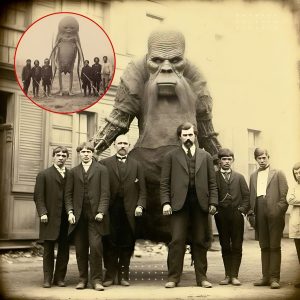In a breathtaking discovery that has captivated the world of archaeology, a 5,500-year-old grave containing a colossal 10-meter skeleton has been unearthed. This extraordinary find not only challenges our understanding of ancient civilizations but also stirs the imagination with tales of giants that once roamed the earth. The implications of this discovery are profound, offering new insights into the myths and realities of our ancient past.
The Discovery
The grave was discovered in a remote and previously unexplored area, nestled within a landscape that has long been shrouded in mystery. Archaeologists conducting a routine excavation stumbled upon the grave, only to be astounded by the sheer size of the skeleton it contained. Measuring an astonishing 10 meters in length, this skeleton is unlike anything previously documented.
Initial examinations suggest that the grave dates back approximately 5,500 years, placing it in a period of early human history where many civilizations were just beginning to take shape. The size and preservation of the skeleton have left researchers both puzzled and exhilarated, as it provides an unprecedented glimpse into the physical characteristics and burial practices of an ancient people.
Cultural and Historical Context
The discovery of such a giant skeleton has significant cultural and historical implications. Many ancient cultures have legends and myths about giants—beings of enormous size and strength who played crucial roles in their mythologies. This find brings those myths into the realm of possibility, suggesting that there may have been a basis for these stories rooted in reality.
Artifacts found within the grave, including pottery, tools, and ornate jewelry, indicate a sophisticated society with complex burial rituals. The grave itself is constructed with remarkable precision, featuring elaborate carvings and a structure designed to honor the deceased. This level of sophistication points to a society that valued its dead and had the means to construct such impressive burial sites.
The Enigma of the Giant
The existence of a 10-meter skeleton raises numerous questions about the physiology and lifestyle of such an individual. How did this person reach such an extraordinary size? What role did they play in their society? Were they an outlier, or did they belong to a race of similarly gigantic people?
Scientists are eager to conduct further studies, including DNA analysis and isotopic testing, to uncover more about the individual’s diet, health, and origins. These tests could provide clues about the environmental factors and genetic traits that contributed to their enormous stature.

Myth and Reality
The intersection of myth and reality is a fascinating aspect of this discovery. Throughout history, tales of giants have been told in various cultures, from the Nephilim in the Bible to the Titans in Greek mythology. This discovery adds a layer of credibility to those stories, suggesting that they may have been inspired by real events or beings.
The find also prompts a reevaluation of other ancient sites and artifacts. Could there be more evidence of giants hidden beneath the earth, waiting to be discovered? How many other myths and legends might have roots in historical events that we have yet to uncover?
Conclusion
The discovery of a 5,500-year-old grave with a towering 10-meter skeleton is a groundbreaking moment in archaeology, blending the lines between myth and reality. This find offers a tantalizing glimpse into a world long past, challenging our understanding of ancient civilizations and the stories they left behind.
As researchers continue to study this remarkable find, the world watches with bated breath, eager to learn more about the giant of antiquity. This discovery not only enriches our knowledge of the past but also ignites the imagination, reminding us that there are still many mysteries of our ancient world waiting to be uncovered.





